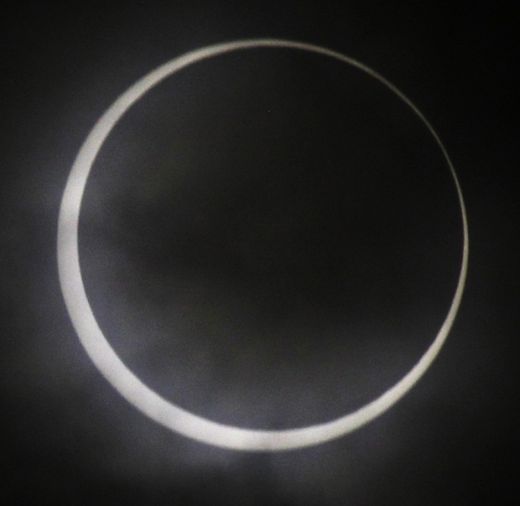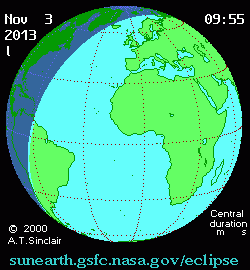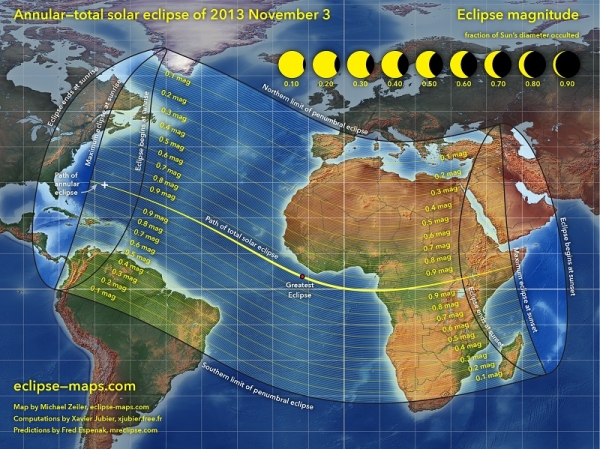
The eclipse will begin as an annular eclipse -- also referred to as a "ring of fire" eclipse, in which the Moon blackens all but the outer circumference of the Sun -- then, after about 15 seconds of annular eclipse, the Moon's orbit will be close enough to Earth to create a total solar eclipse, where Moon completely hides all direct rays of sunlight from the observer.
The annular period of the eclipse may be visible from the North American east coast at sunrise on Sunday, according to Space.com. But the majority of the eclipse action will occur over the Atlantic Ocean and Africa. Some parts of Europe, including Portugal, Spain and southern Italy will also be able to see the eclipse, as will the Arabian Peninsula.
For the US East Coast, clear skies down to the eastern horizon will be essential for good eclipse viewing. Residents in Washington, DC can expect the eclipse to begin at 6:38 a.m. and last for about 30 minutes.
Writing for Universe Today, David Dickenson nicely described the eclipse path:
"Nearly all of Africa and the southern Mediterranean region including Spain will see partial phases of the eclipse, while greatest totality occurs just off of the coast of Liberia and heads for first landfall on the African continent over Wonga Wongue Reserve in Gabon. At this point, the duration of totality will already have shrunk back down to 1 minute and 7 seconds. The shadow of the Moon will then cross central Africa, headed for a short but brilliant sunset total eclipse over Uganda, Ethiopia, Kenya and Somalia."
A hybrid eclipse like Sunday's is quite rare. Out of about 12,000 solar eclipses that have happened in the last 4,000 years, only 5 percent have taken this hybrid form, according to Universe Today.
Live broadcasts of the eclipse are not widely planned, as much of it will occur over wild regions of Africa. However, the website Slooh plans a broadcast and BRCK also plans to broadcast the event from the shores of Lake Turkana in Kenya.
If you plan to view the eclipse, be sure to wear eye protection. Looking directly at an eclipse with the naked eye can cause irreversible eye damage or blindness. A surprising amount of techniques -- including the use of polarized sunglasses or various dark filters -- are actually unsafe for eclipse viewing. The safesty way to view an eclipse is with glasses specifically made for eclipse viewing or to build a pinhole camera.
Eclipse-maps.com has a vast wealth of information about Sunday's eclipse, including optimum viewing locations and times for many places around the world. The below map was created by Michael Zeiler, curator of eclipse-maps.com.





Reader Comments
to our Newsletter